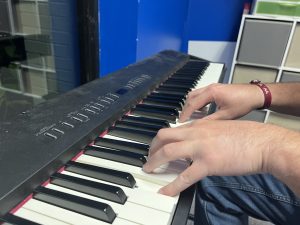
Counseling and therapy are critically important in the treatment of those affected by domestic violence, but not everyone has access to those resources in the traditional sense. Sometimes we, ourselves, can perform our own kinds of therapy, thus leading to our own healing.
For many, music is a form of therapy that can alleviate some of those unattended wounds from the past. This can be testimony to how someone overcame a difficult situation, or it can simply showcase a series of events that someone has gone through.
“Let freedom ring,” Martina McBride howls on the first line on the chorus of her Platinum-certified single, “Independence Day.”
At first glance, the song may appear to be a love letter for the famous American holiday, but upon further examination, we see the song is actually about a woman escaping domestic abuse.
The faux patriotic anthem was written by Gretchen Peters over the span of a year and a half and tells the story of a woman attempting to leave her unfortunate circumstances through the eyes of her daughter.
In “Independence Day” the our motherly protagonist escapes her violent situation and finally becomes independent from the nightmare scenario.
Peters tells the story in the classic country storytelling format, but also does not hide from the song’s core attention to the theme.
“Let the weak be strong, let the right be wrong // Roll the stone away, let the guilty pay // It’s Independence Day,” McBride belts on the song’s hook.
In comparison to “Independence Day,” singer-songwriter Tracy Chapman’s “Behind the Wall” — a timeless acapella track that Chapman wrote herself — takes on the role of the neighbor and offers a folk-tailored tune that is much darker than McBride’s song.
Unlike McBride’s empowering tune of a victim overcoming her abuse, “Behind the Wall” takes an approach that highlights the unfortunate actuality of many domestic violence situations.
“Last night I heard the screaming // Then a silence that chilled my soul // I prayed that I was dreaming // When I saw the ambulance in the road // And the policeman said // ‘I’m here to keep the peace // Will the crowd disperse? // I think we all could use some sleep’,” Chapman sings as she recounts the events of a domestic violence case.
Domestic violence is a serious issue that should be treated as such. This self-performed form of therapy is not foolproof or perfect.
Professional counseling and therapy is still heavily encouraged. However, this form of music therapy is something that can provide a sense of familiarity and relatability that hopefully can begin the process of healing some of those haunting ghosts.














